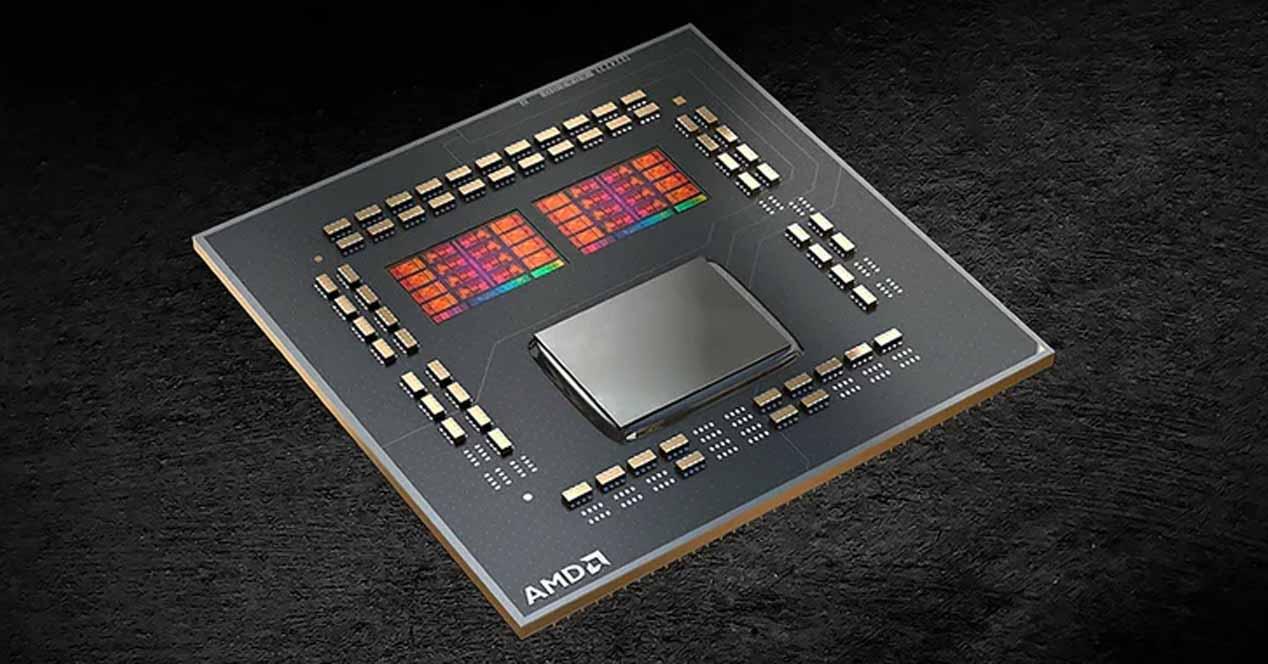Apart from the densities of millions of transistors per mm2, it is important to understand that AMD and Intel seek to provide processors with maximum performance but within a fixed limit of power consumption, which is increasingly precise. This leaves a narrow wiggle room where the processor has to move with the operating system in looking at what, when and how any process does as well as the load it receives.
The problem is the triangle (like if you want to be romantic in the material) between energy, frequency and temperature. You need a balance that allows you to increase performance without compromising on performance, and it’s a tough task that needs to be straightforward for the operating system as well. This is where the P states and frequency hopping were born, so now we will focus on AMD to understand a little more how the Feed tracking o PPT package.
Why is energy so important now?
For the same reason we just explained, for efficiency, but let’s take another twist to understand the issue of energy. In the past and although today it can also be done in processors, if the processor overheated it was synonymous with high voltage or high frequency, so by adjusting one or both parameters downwards you could lower the temperature.
But that was too simplistic an approach, as the performance loss is much greater, thus limiting the total CPU power consumption. are they not related? Yes, but they are not the same and it does not work the same. When you compete for every point of a benchmark or for every watt of a processor to also maximize performance, you can’t afford to turn down the frequency and undervoltage only affects the processor and its power. voltage.
The solution is to directly limit energy consumption and this is where our protagonist comes in.
What is Power Tracking Package or PPT on AMD CPU?
The more or less literal translation of the term would be something like Tracking the power of the packet (of the socket). The feature is almost described by its own name and it’s nothing more than the fact that AMD places a limit on how much power a processor can draw through the motherboard’s rails and power phases.
Here you have to keep in mind that, as a rule, it has limits. The first of these refers to processors with a TDP of up to 105 watts or more if needed, the second does the same but with 65 watts. The function is to limit the energy delivery for the first until 142 watts
This is important depending on the processor to be analyzed, because those that are really close to the full limit values will be able to scale their frequency more by the algorithm of DPB which is automatic, while those who exceed the 142 watts and 88 watts respectively they will see their frequencies limited and they will constantly touch these consumptions, but they will not be able to go up from there.
Why is AMD limiting its CPUs with PPT?
Because it aims to offer a higher temperature, performance and efficiency ratio. As we said, it’s all about efficiency and leaving free the consumed watts or setting very high limits or for a short time what they do is be less efficient and pull the temperature up.
As expected, if we want, we can exceed this PPT limit and let the processor consume and increase more MHz, with more voltage and gain more performance, but the temperature will also exceed the 70 ºC implemented by AMD. Therefore, processors such as the Ryzen 9 3950X or 5950X always score values between 140 and 144 watts on average or peak (it depends on the stress and ASIC they have) where in any case they do not. will exceed this value if it is not by work and our thanks for breaking the limit suggested by AMD.
So once the PPT limit is exceeded in BIOS, AMD CPUs have no limits and can go up until cooling allows? No, there are safety limits that force lowering to avoid catastrophe for processor safety, but it will depend on the resulting temperature, because if we use LN2 this limit is very high and we can just bring the silicon to its physical limit.
Interestingly, the PPT limit of AMD is not locked, that is, after reducing the power consumption, which is perfect for maintaining the highest performance by reducing the consumption and temperature a lot, because the jumps in the SKUs of the processor are more progressive and less abrupt like a drop in frequency and voltage, so that the PBO algorithm is allowed to evolve more frequently due to the temperature drop, maintaining similar performance ranges.
This is what the Ryzen Master software does with its eco mode, only that instead of being in the BIOS with a program and with only 3 clicks and without leaving Windows, but of course it is more advisable to do it in UEFI will always be more efficient in these terms.










